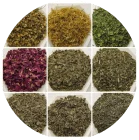Coltonmonks25689
New Member
I got my Russian tortoise about 4 months ago I quickly found out that her favorite food was green peppers and Romain lettuce she would eat it down but recently she stopped eating about 3 weeks ago. She has a heat lamp on for atleast 10 hours a day. The bedding I use is timmothy hay and her cage is big enough any ideas why she ain’t eating




